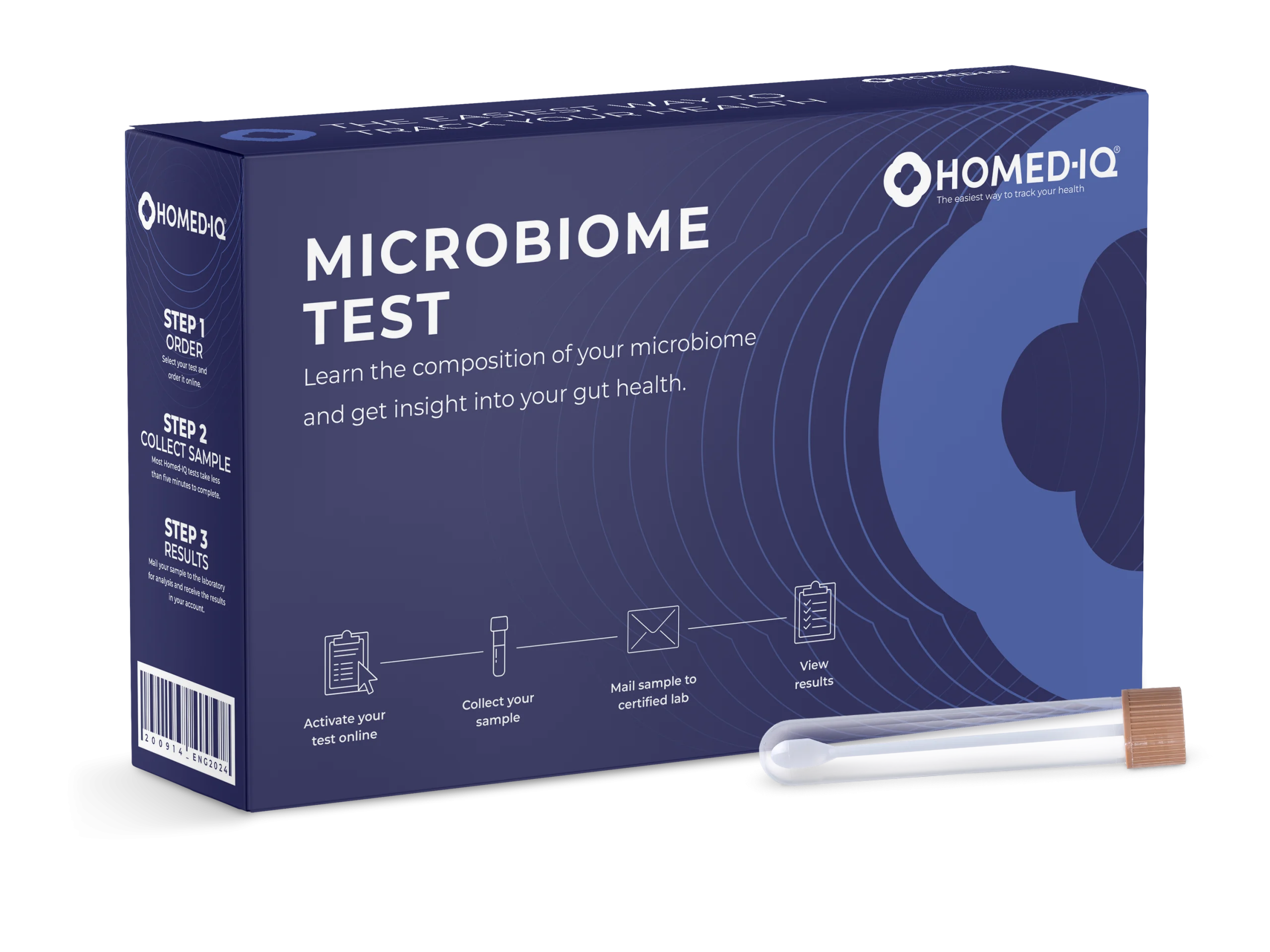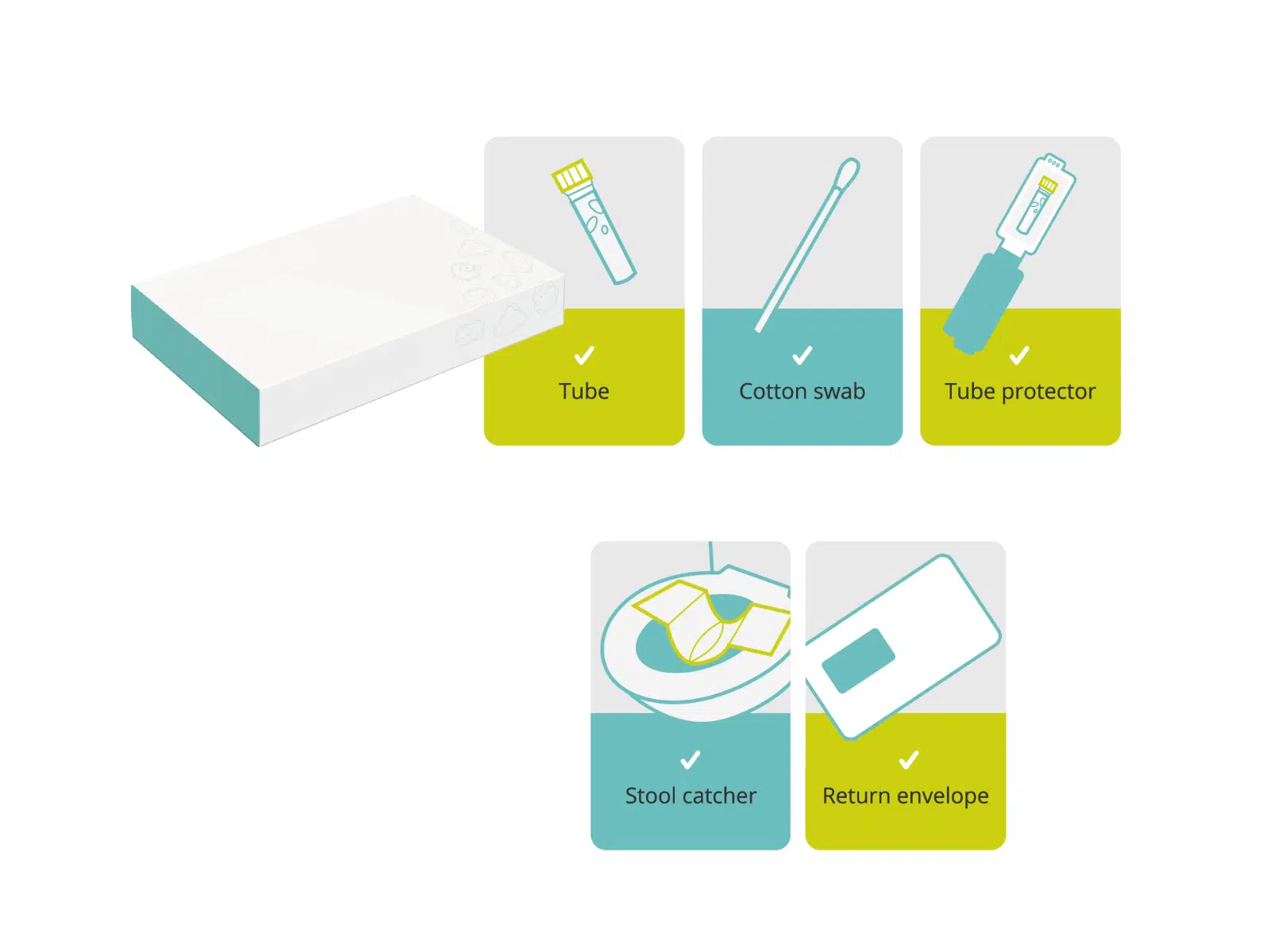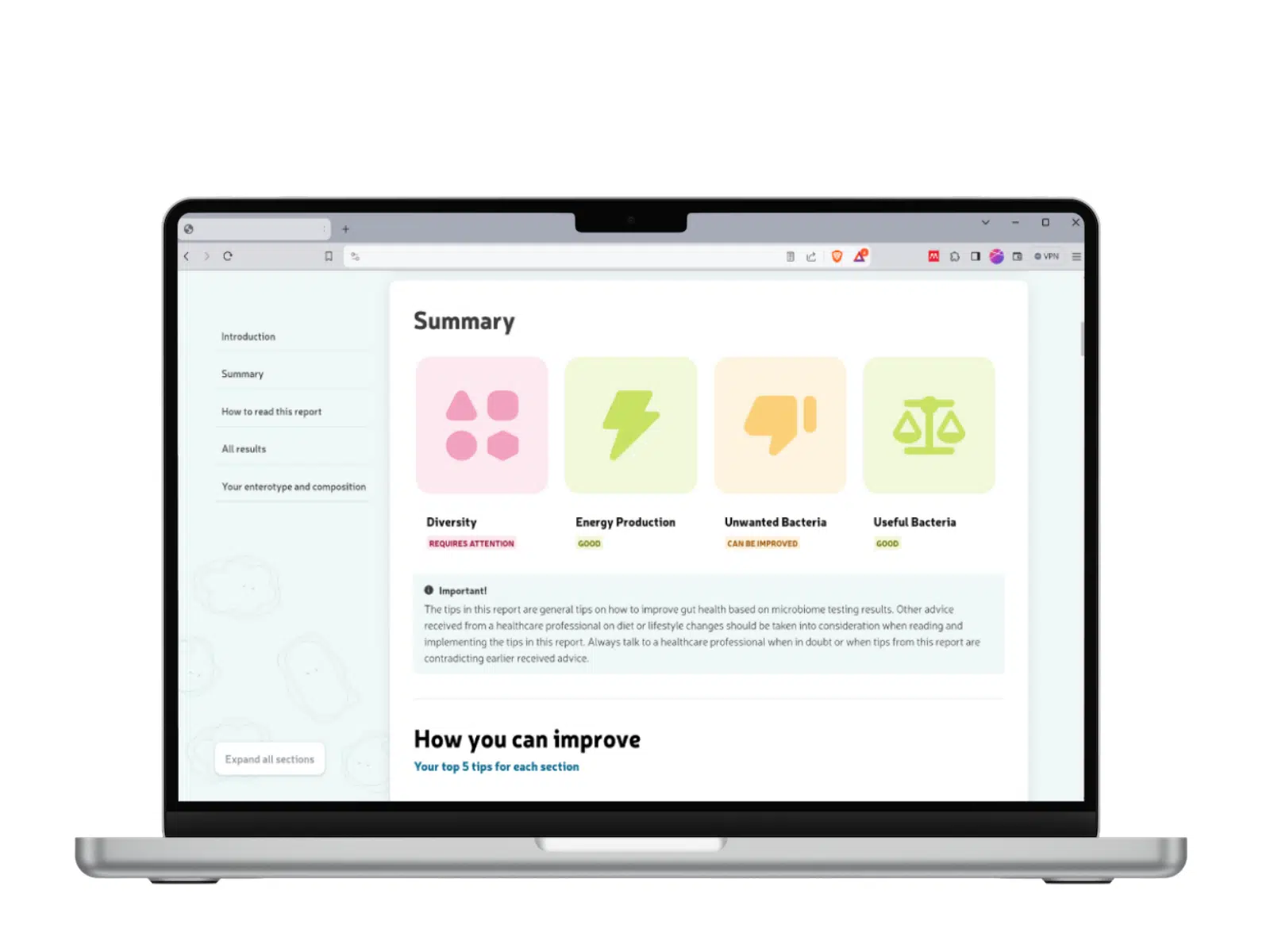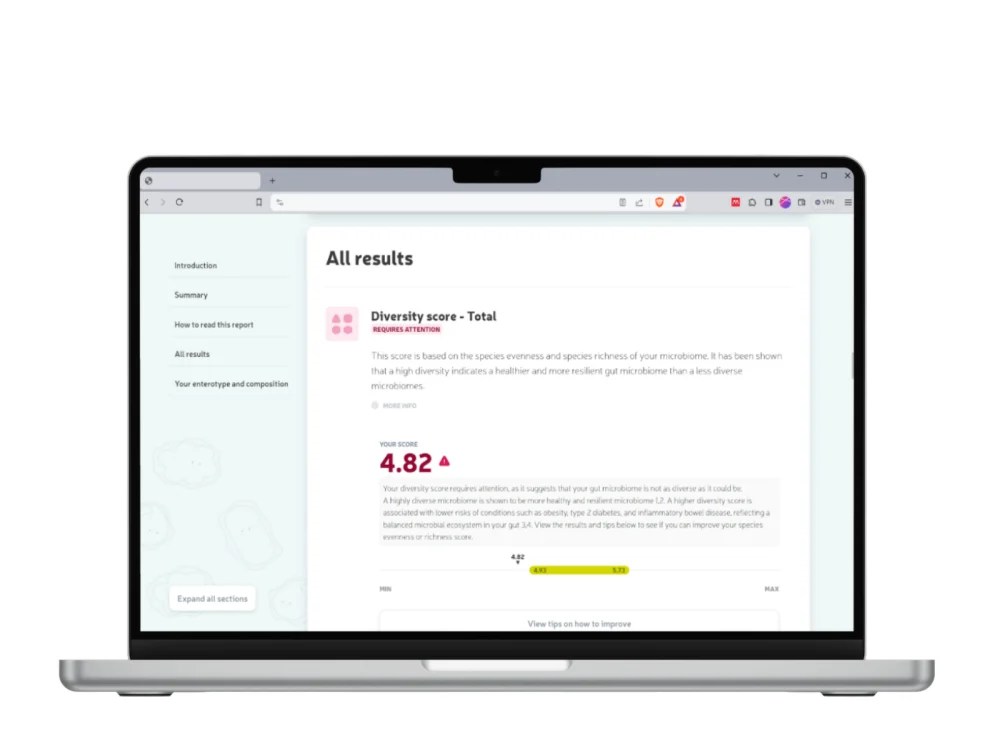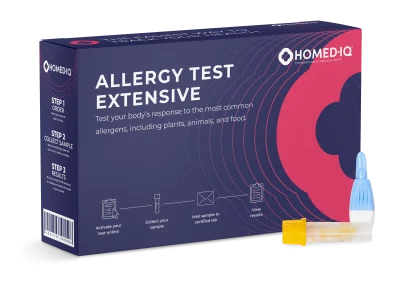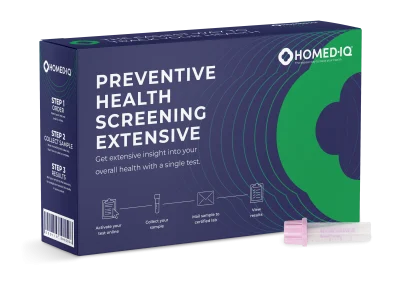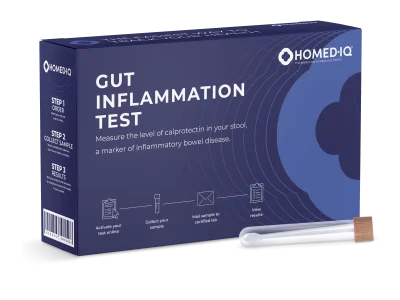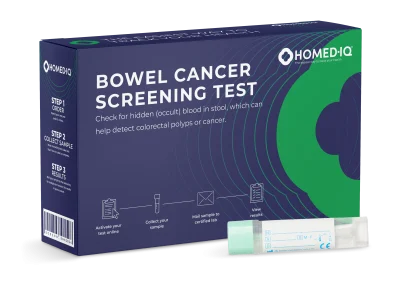

Microbiome Test
DNA Analysis of gut bacteria
€169,00 Free Shipping
What do we test for?
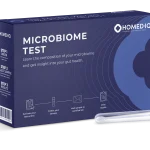
€169,00 Free Shipping
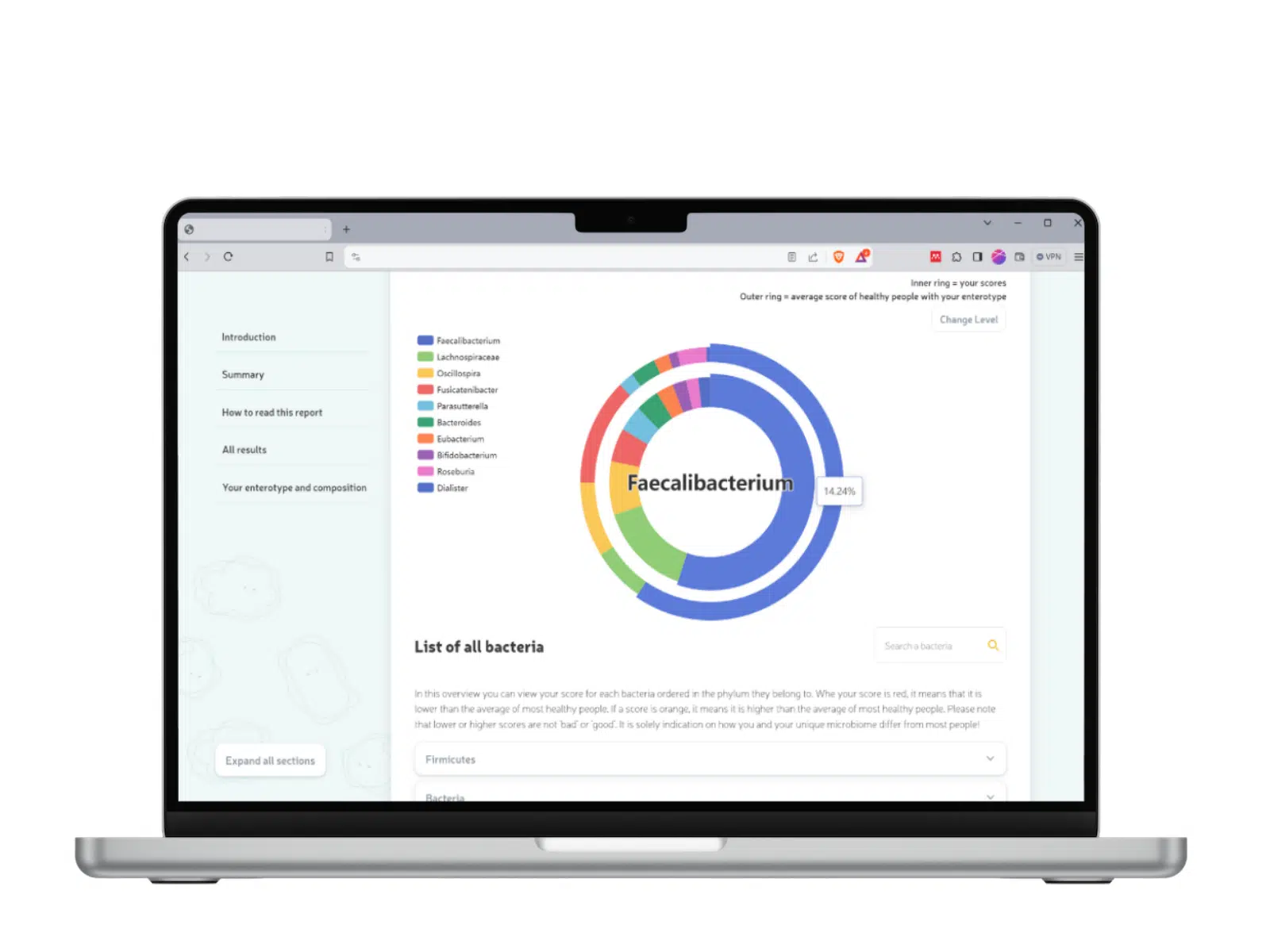
What is the gut microbiome?
The gut microbiome is like a bustling city of tiny living things inside our digestive system, mostly in our intestines. This “city” is home to trillions of microscopic organisms, including bacteria, viruses, and fungi. These microbes help us digest food, protect us from harmful invaders, and even communicate with our immune system. Just like each city has its unique mix of people, everyone’s gut microbiome is slightly different. What we eat, our health, and our environment can shape the composition of our microbiome, affecting our overall health in return.
According to estimates, the gut microbiota contains 10^14 (100,000,000,000,000) bacteria, or more than 1000 times the Earth’s population. The DNA of all these cells collectively referred to as the microbiome, has 3 million unique genes. Since their discovery, over 2000 unique bacteria have been discovered, and new ones are constantly being discovered. Each individual has between 400 and 600 unique species in their gut (estimates vary), which changes in response to the bacteria we consume and our genetic predisposition, among other factors. As a result, each person possesses around 30 different species of bacteria, which is also known as the core microbiota.
How does the microbiome affect health?
The gut microbiome is not only a community of microorganisms living in our digestive tract- it plays an important role in maintaining our overall health. The microbiome aids in digestion, supports immune function, and helps regulate metabolism. A balanced microbiome also produces essential vitamins, helps fight harmful pathogens, and influences the body’s inflammatory responses.
Disruptions to the gut microbiome, often caused by poor diet, stress, or antibiotic use, are related to various health issues such as digestive disorders, weakened immunity, and even conditions like obesity and type 2 diabetes. Maintaining a healthy gut microbiome is key to overall well-being.
What are the symptoms of an imbalance in the gut microbiome?
The gut microbiome affects many different body processes and is still an area of intense research. While imbalances or lack of diversity in the gut microbiome has been found to be associated with certain health problems, it is not yet known whether the microbiome is the only cause of these symptoms. Diseases that are associated with the gut microbiome are anxiety, depression, hypertension, cardiovascular diseases, obesity, diabetes, inflammatory bowel disease, and certain types of cancer.
An imbalance in the gut microbiome may cause non-specific symptoms, such as:
- Gastrointestinal problems, such as constipation, gas, abdominal pain, and diarrhea
- Trouble sleeping
- Chronic fatigue
- Acid reflux
- Food intolerances
- Mood changes, such as anxiety or depression
- Acne or skin rashes
What does this test measure?
This Microbiome Test analyses nearly the entire spectrum of bacteria that live in the gut. This analysis can:
- Identify bacterial species: The results can be used to identify the specific types of bacteria in your gut. This information can help us understand how certain species may be associated with different health outcomes in the gut.
- Determine bacterial diversity: The diversity of bacteria in your gut can be measured by analyzing the number of species present. Higher bacterial diversity has been linked to certain improved health outcomes.
- Evaluate the level of energy-producing bacteria: Your gut bacteria provide most of the energy your gut needs to function. A healthy gut needs to have a lot of these bacteria to ensure that your intestinal cells are properly nourished. Too little of these bacteria can lead to leaky gut syndrome.
- Find out if there are a lot of unwanted bacteria: Some bacteria are less welcome guests in your gut microbiome because they can cause symptoms. Our report shows whether you are keeping these bacteria in check and what you can do if they get out of hand! (In addition to some unwanted species, we also show you how you score on sulfate-reducing bacteria and proteobacteria. You want to avoid having too many of both groups in your gut!
- Learn about functional groups like lactate-forming and mucin-degrading bacteria: Both groups are considered healthy groups in your gut: Lactate is a food source for other bacteria (like butyrate-producing bacteria), and mucin-degrading bacteria help support the integrity of your intestinal lining by stimulating renewal.
- Evaluate the effect of lifestyle choices on gut health: The results can be used to evaluate how lifestyle choices, such as diet, exercise and medication use, influence the composition of your gut microbiome.
- Monitoring the effectiveness of interventions: If you make lifestyle changes or take probiotics or other interventions to improve gut health, the results of this test can be used to monitor the effectiveness of these interventions.
How is the gut microbiome measured?
Every bacteria has a core that contains their DNA. This DNA consists of two strands and contains ‘recipes’ for all things of a bacteria. To create all these things, a recipe (piece of DNA) is first copied into a single strand of DNA that can move to outside the core. This piece is called a RNA strand. The recipe on the RNA is then processed in a ribosome. Ribosomes are little factories that create proteins. The ribosome itself is made of proteins and RNA molecules. One of these RNA molecules is called the 16S rRNA. Pieces of this RNA are different for each bacterial species. Therefore, by analyzing this piece of DNA, we can find out which species it belonged to.
How does a Microbiome Test work?
A gut microbiome test measures the composition and diversity of microorganisms in your digestive system. Using a stool sample, the Microbiome test analyzes the wide range of bacteria that live in your gut.
How do I collect a stool sample from home?
Your Microbiome Test comes with everything you need to collect a stool sample from home. After collecting your sample, mail it back to our lab in a prepaid return-envelope. The lab will share your results with you within 3-4 weeks.
What will the test result contain?
The test result provides scores for various parameters, with the main scores highlighted in the summary as the most critical. For each score, you can access the “Tips to Improve” section to discover specific actions you can take to enhance that score. The following parameters are available in the results report:
- Composition: An overview of the different species we found and in which abundance.
- Diversity: A higher diversity is an indicator for a healthy gut
- Enterotype: your microbiome type that is based on which bacteria you encountered as a child and your diet choices
- Keystone species: These species fulfill a key role in the microbiota.
- Butyrate producing bacteria: Butyrate is thé most important energy source for your gut. A score within or above the reference range is an indicator for a healthy gut.
- Propionate producing bacteria: Propionate plays a major role in the feeling of satiety and in the sugar metabolism
- Lactate producing bacteria: Lactate producing bacteria (also called lactic acid bacteria) are known for their production of lactate. Lactate is an important food source for other bacteria who cannot live off sugars from food sources.
- Gas producing bacteria: Gas production in the gut is a natural process which provides the gut and body with energy. However, too much gas production can cause abdominal complaints such as bloating.
- Unwanted bacteria: Some bacteria are less wanted in your gut since they are known to cause irritation in your intestines.
What does the test result mean?
The results of this test contain information about the composition of your gut microbiome, including potential imbalances of certain bacteria. The test results also contain personalized steps you can take to improve your gut microbiome through diet and lifestyle. By learning more about the composition of your microbiome, you can identify potential deficiencies and make diet and lifestyle changes that support your gut health.
Frequently asked questions
Who should use this microbiome test?
- Have digestive problems (bloating, gas, constipation, or diarrhea)
- Want to learn more about your health
- Are interested in improving the gut microbiome
- Experience a lot of stress or mood problems
- Do not sleep well or often feel unwell
- Have low energy
How can I improve my gut microbiome?
- Eat a varied diet: A varied diet can promote a diverse gut microbiome. Try to incorporate a broad range of foods, especially plant-based ones, into your meals. Different microbes thrive on different types of foods.
- Eat more fiber: High-fiber foods, such as whole grains, legumes, fruits, and vegetables, act as fuel for beneficial gut bacteria.
- Consume fermented foods: Foods like yogurt, kefir, sauerkraut, kimchi, miso, and kombucha contain live beneficial bacteria (probiotics) that can positively influence your gut microbiome.
- Take prebiotics: Prebiotics are non-digestible fibers that feed beneficial gut bacteria. Foods like garlic, onions, asparagus, and bananas are good sources.
- Avoid overusing antibiotics: While sometimes necessary to treat infections, overuse or misuse of antibiotics can harm the balance of gut bacteria. Only use them as prescribed by a healthcare professional.
- Stay hydrated: Drinking plenty of water benefits the mucosal lining of the intestines and promotes the growth of beneficial gut bacteria.
- Limit stress: Chronic stress can negatively impact gut health. Find stress-reducing activities that suit you, such as meditation, exercise, or hobbies.
- Get regular exercise: Physical activity can enrich the diversity of the gut microbiome. Find a routine that you enjoy and is sustainable for you.
